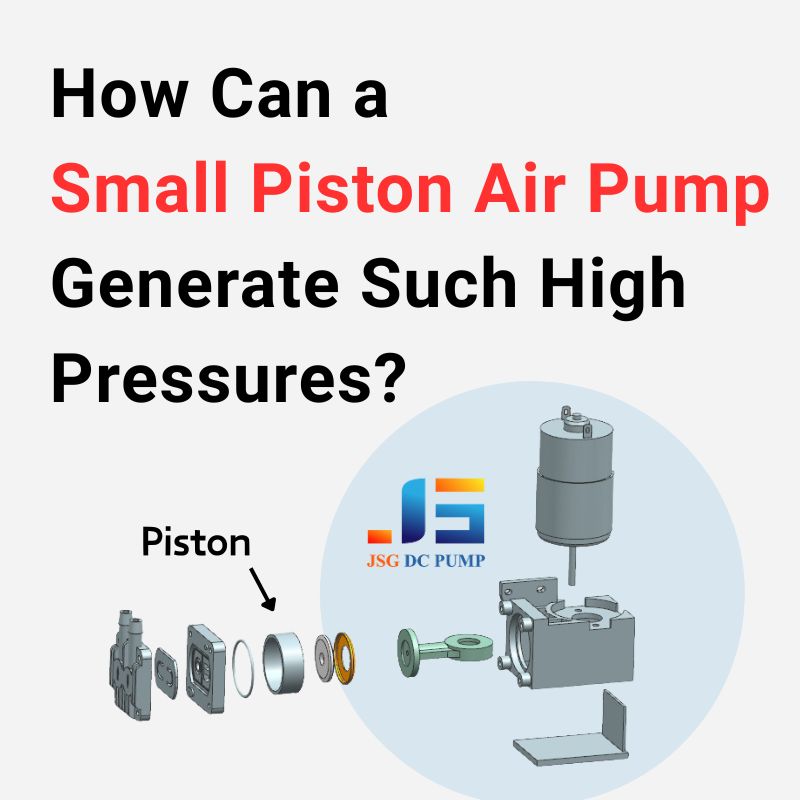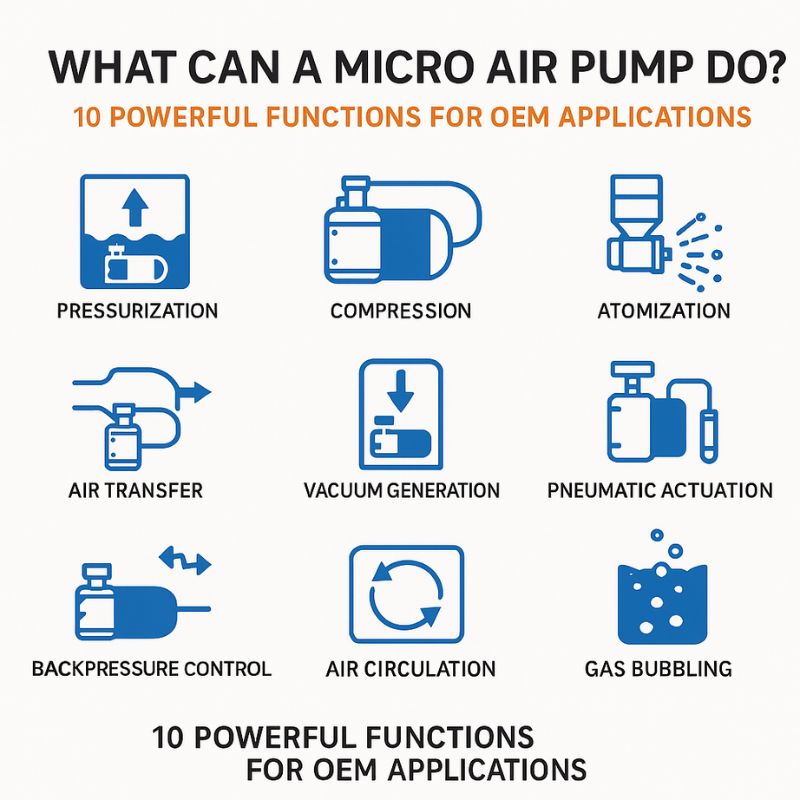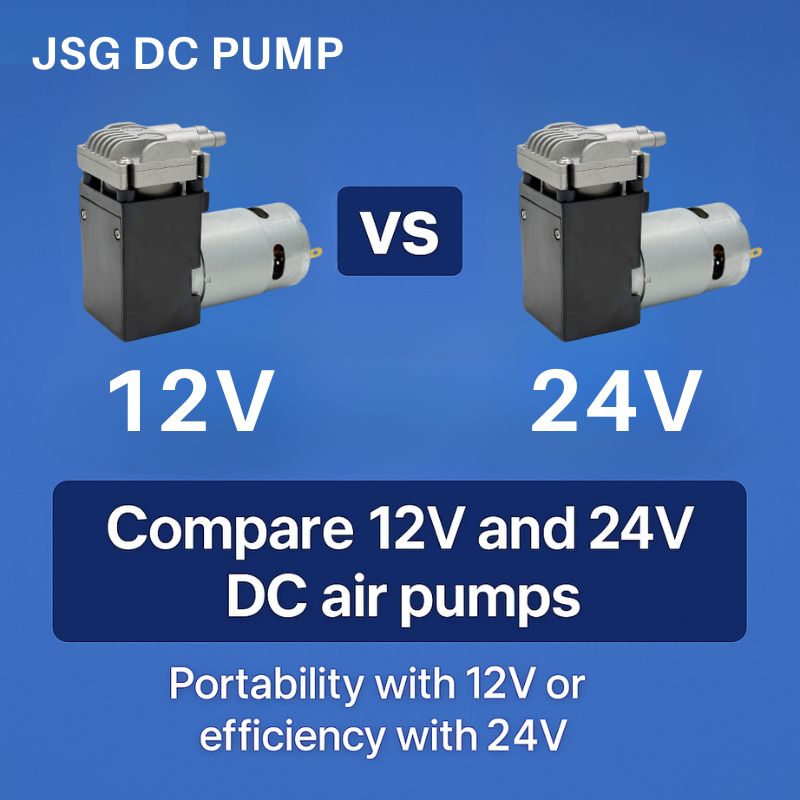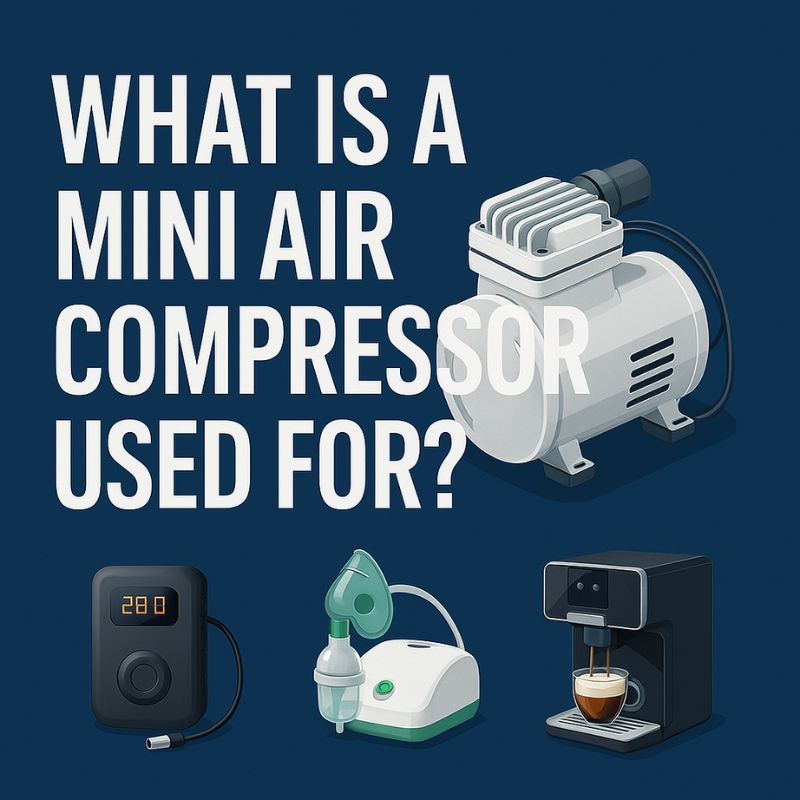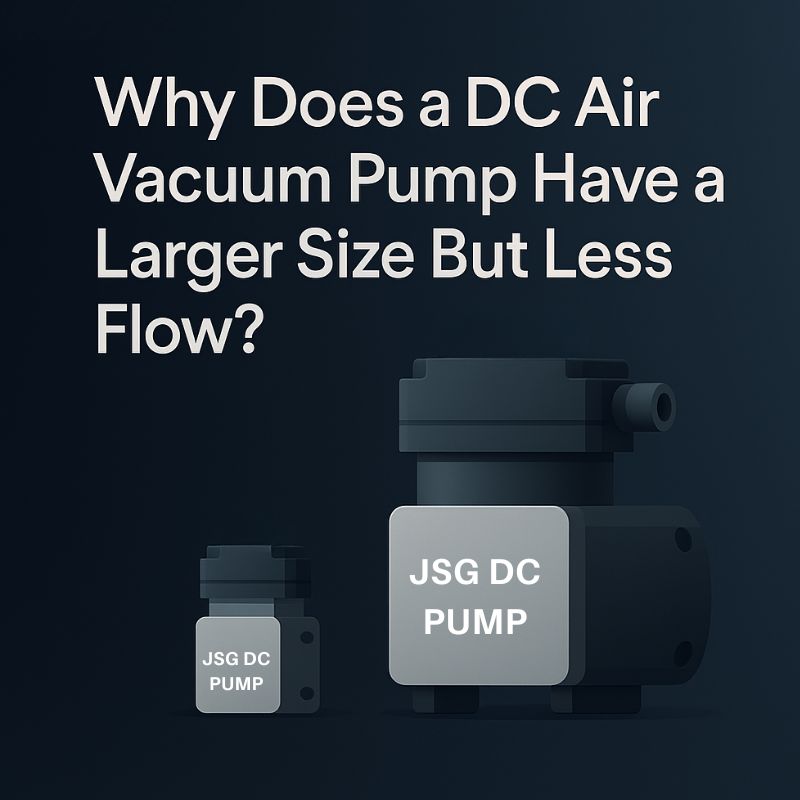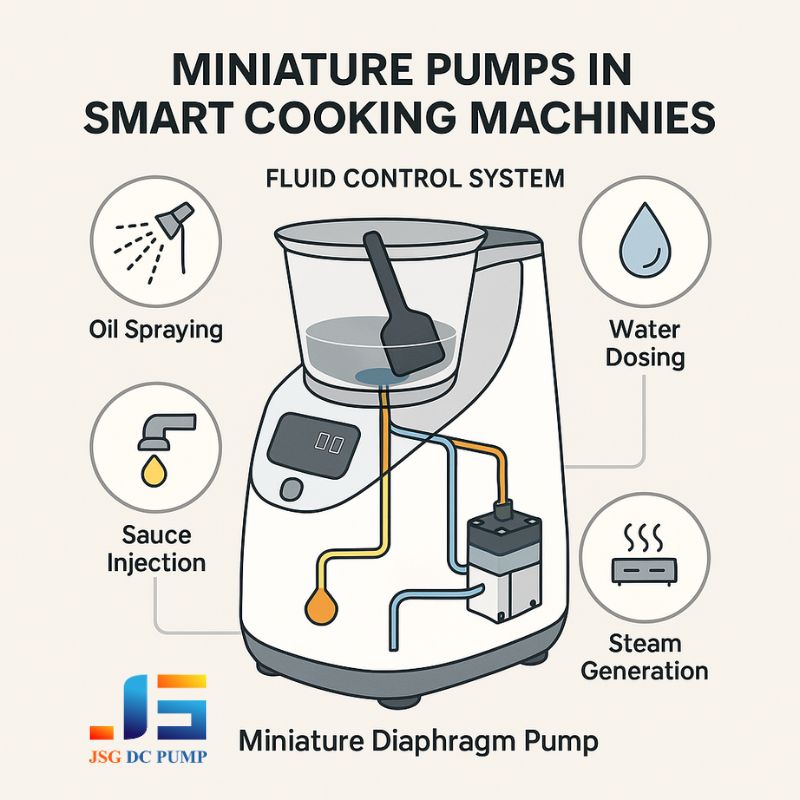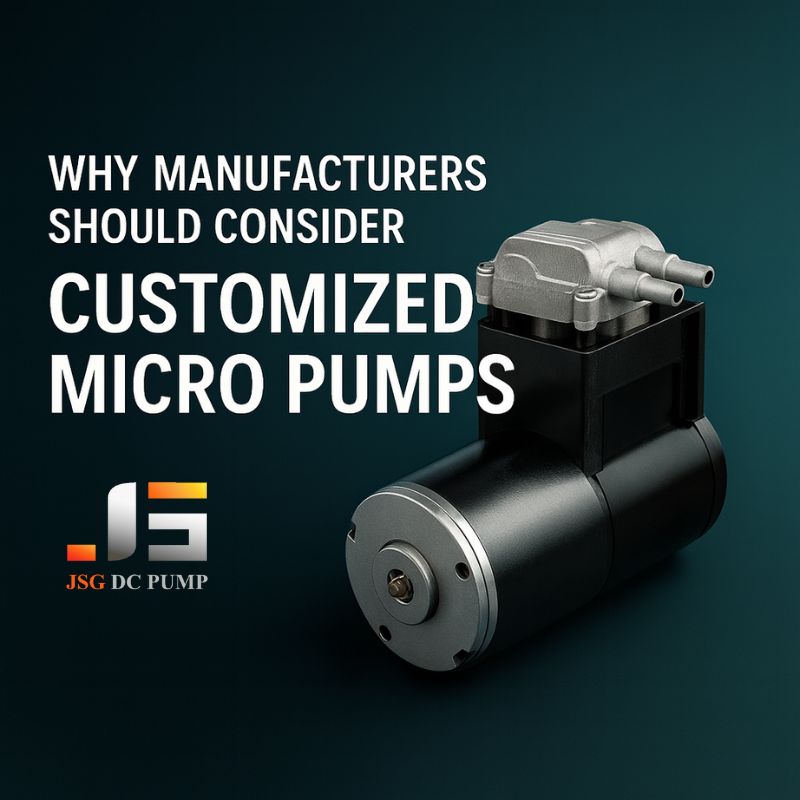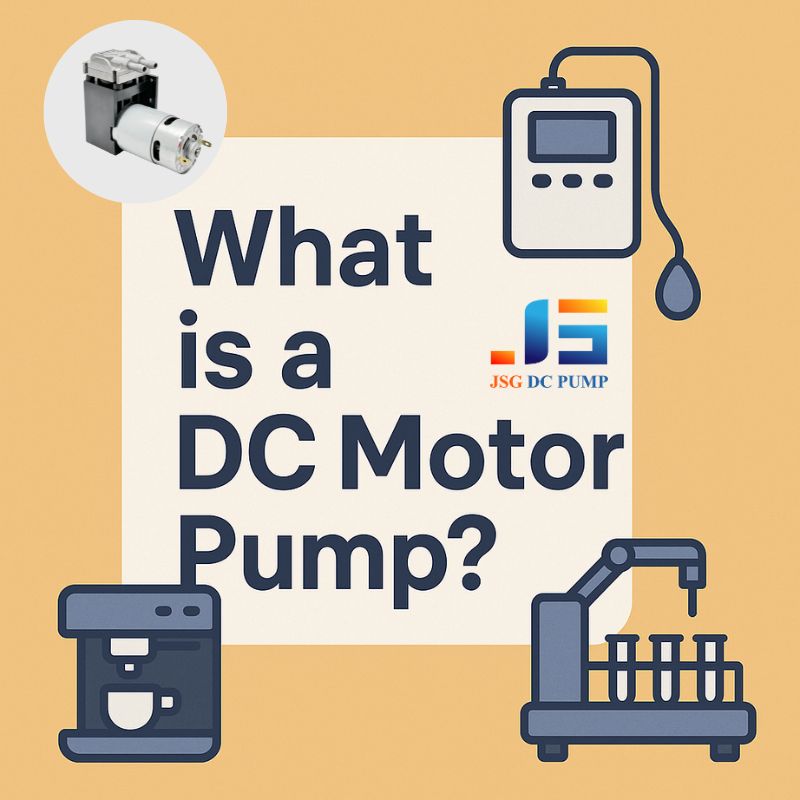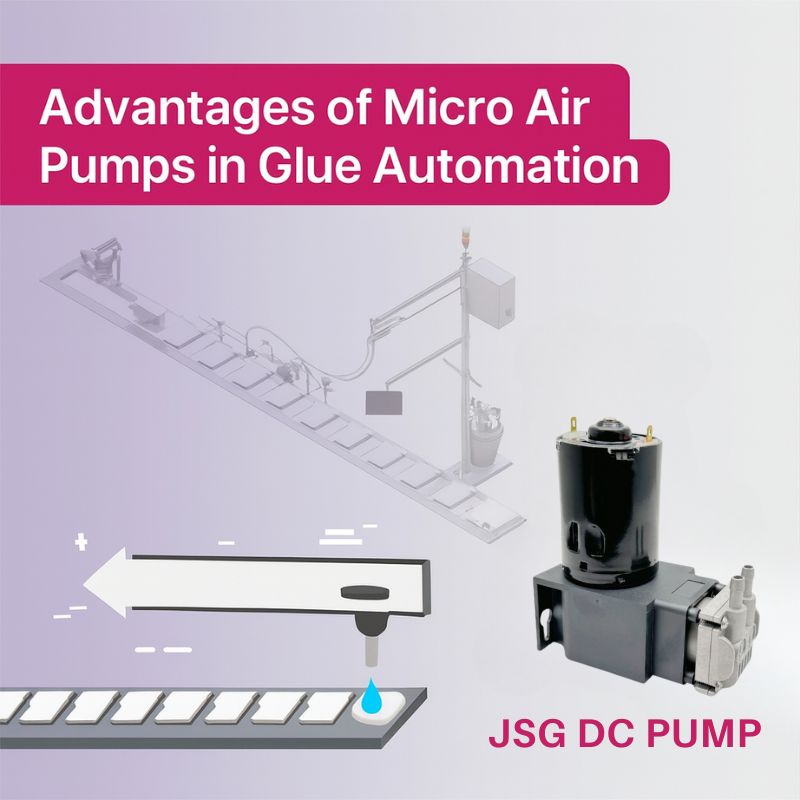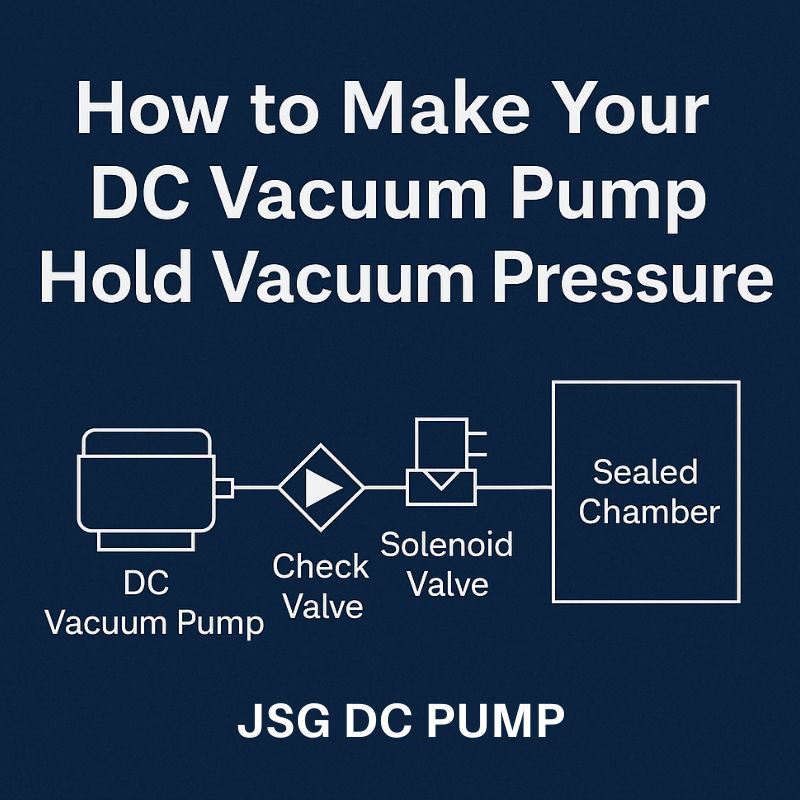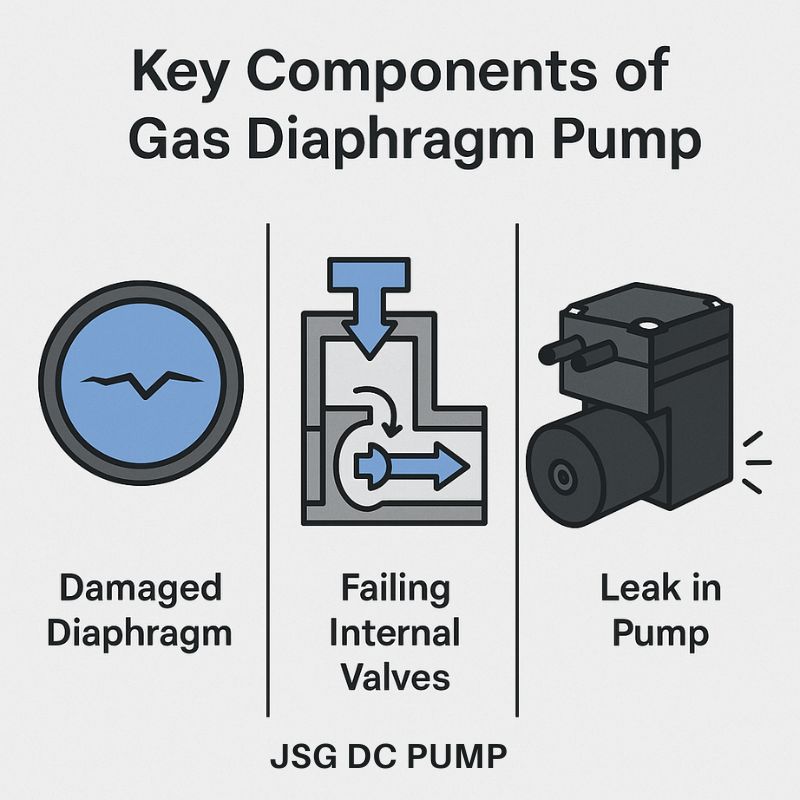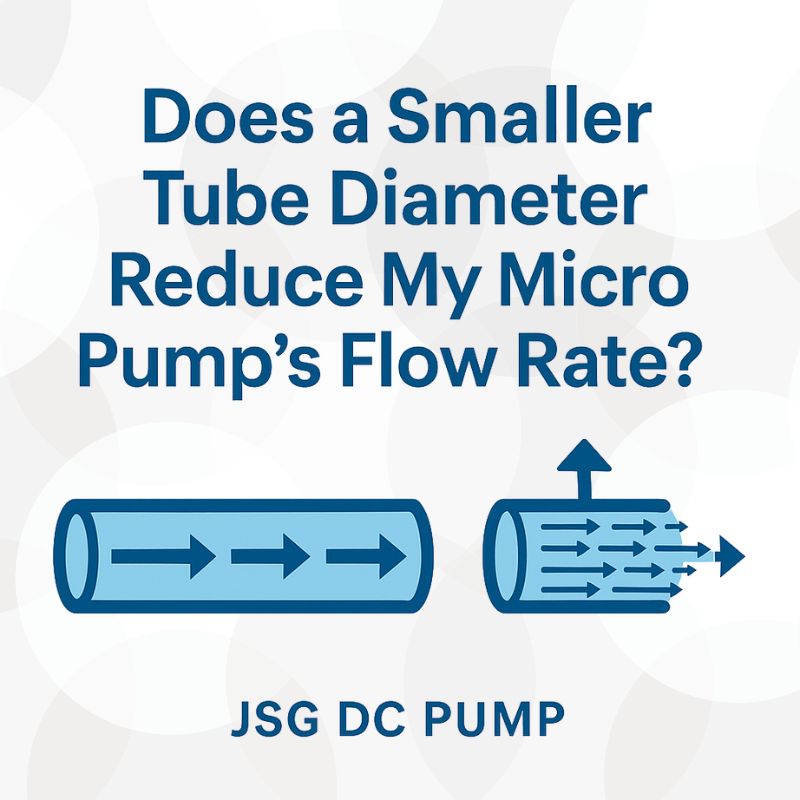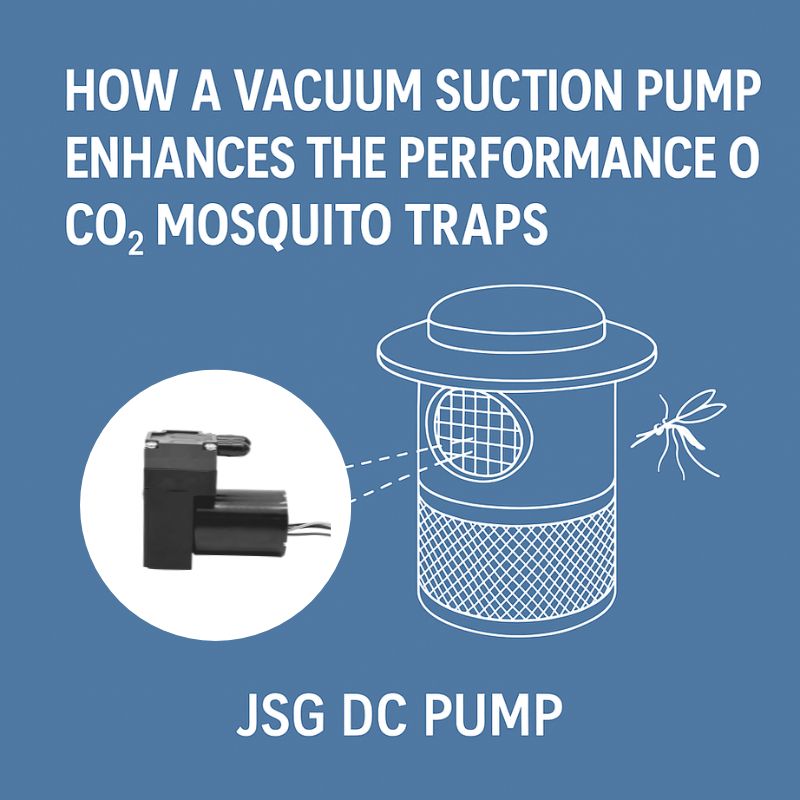You’re designing a device that needs serious air pressure, but you only have a tiny space. Looking at a small piston air pump, it seems impossible that something so small could do the job.
A small piston pump generates high pressure by mechanically concentrating force onto a very small area. It uses an eccentric cam and a long piston stroke to compress air, combined with exceptional sealing to prevent leaks, effectively multiplying the motor’s force into high output pressure.

As an engineer at JSG, this is one of the most common questions I get from clients. They see a pump that fits in the palm of their hand and then look at a datasheet promising pressures that seem to defy its size. It’s not magic; it’s just clever mechanical engineering. The principles are the same ones that allow a hydraulic car lift to raise a two-ton vehicle. We just apply them on a micro-scale. Let’s break down exactly how these little giants work.
What’s the Secret Behind High Pressure in a Small Space?
The physics seems complex and you’re unsure how a small motor’s power can be converted into such high force. This makes it hard to trust a mini pump for a demanding application.
The secret is applying Pascal’s principle (Pressure = Force / Area). By using a piston with a very small surface area, the modest force from the motor is concentrated, generating immense pressure within the pump chamber.

The fundamental concept is surprisingly simple. Think about a thumbtack. Your thumb applies a gentle force over the large, flat head. But that same force is concentrated onto the tiny, sharp point, creating enough pressure to easily penetrate a solid wall. Our piston pumps do the exact same thing. The motor and connecting rod provide the “Force.” The small circular face of the piston head provides the tiny “Area.”
When the force is applied to that small area, the resulting “Pressure” becomes very high. At JSG, we meticulously design the diameter of the piston head and cylinder to optimize this effect. It’s a trade-off; a smaller piston head creates more pressure but moves less air per stroke, resulting in lower flow. We balance these factors to meet specific performance targets.
Why is a Long Piston Stroke Important for High Pressure?
You see “long stroke” listed as a feature on a high-pressure pump’s datasheet. You’re not sure why this mechanical detail is so critical for achieving the pressure you need.
A long piston stroke is crucial because it creates a high compression ratio. It allows the piston to draw in a larger volume of air and then compress it into the same tiny final space, directly resulting in higher peak pressure.

Imagine pumping up a bicycle tire. If you only move the pump handle a few inches, you don’t add much pressure. But when you use a full, long stroke, you can feel the pressure build significantly with each pump. This is the compression ratio at work. The compression ratio is the volume of the cylinder before the stroke divided by the volume after the stroke. A longer stroke dramatically increases the starting volume.
Therefore, when all that air is compressed into the small, fixed volume at the top of the cylinder, the final pressure is much higher. In my design work, specifying a longer stroke is one of the primary methods we use to transform a standard pump into a high-pressure model. It’s a key mechanical decision that pays huge dividends in performance.
How Does the Small Piston Air Pump Mechanics Magnify the Force?
You understand the pressure principle, but you’re wondering how the small rotary motor creates enough linear force to drive the piston against such high back-pressure.
The pump’s mechanics use an eccentric rotating cam to convert the motor’s high-speed rotation into powerful linear motion. This system acts like a lever, trading speed for force and enabling the piston to push against extreme pressures.
This is where the genius of the pump’s internal design really shines. A small DC motor is great at spinning fast, but it doesn’t have a lot of direct pushing force. We solve this by using an eccentric cam system. The motor spins a weighted wheel that is mounted off-center. As this wheel rotates, it moves a connecting rod back and forth, driving the piston. This mechanism works like a crank, converting rotational motion into linear motion.
More importantly, it provides mechanical advantage, similar to using a long wrench to loosen a tight bolt. The motor’s rotational energy is transformed into a slower, but much more powerful, linear force on the piston. This force magnification allows the small motor to overcome the high back-pressure that builds up inside the cylinder during the compression stroke.
Why is Sealing So Crucial for Maintaining Pressure?
Your prototype is failing to reach the target pressure, even with a powerful pump. You suspect leaks, but are unsure just how important the seals really are for performance.
Sealing is absolutely critical because high-pressure air will exploit any microscopic escape path. A precision piston ring or cup seal is essential to prevent compressed air from leaking back past the piston, which would destroy the pump’s efficiency.
Building pressure is only half the battle; you also have to hold it. When you’re dealing with pressures over 100 psi (or 700 kPa), air behaves like water, relentlessly seeking the path of least resistance. The most vulnerable point is the gap between the moving piston and the stationary cylinder wall. This is where the piston seal does its job. In our JSG pumps, we use custom-engineered piston rings or cup seals made from specialized, wear-resistant polymers.
These seals are designed to expand slightly under pressure, pressing themselves against the cylinder wall to create an almost perfect barrier. Without this high-integrity seal, the compressed air would simply blow by the piston on the compression stroke, and the pump would never reach its rated pressure. It’s an unglamorous but utterly essential component.
What Are the Limiting Factors for a Piston Pump’s Pressure?
You’re trying to push the boundaries of what a mini pump can do. You need to know what physical and mechanical constraints will ultimately limit the maximum pressure it can generate.
The primary limiting factors are the motor’s torque, the mechanical strength of the components (like the connecting rod and bearings), and heat buildup. As pressure increases, the load on every part of the pump multiplies, eventually reaching a failure point.
While we can generate impressive pressures, there are real-world limits. The first bottleneck is often the motor’s torque. At a certain pressure, the force pushing back on the piston will equal the maximum force the motor and cam system can generate, causing the motor to stall. Second is the structural integrity of the components. The connecting rod, bearings, and even the pump housing are under immense stress.
We perform extensive finite element analysis (FEA) to ensure these parts can withstand the cyclical loads for thousands of hours, but there is always an ultimate breaking point. Finally, there is heat. Compressing a gas generates heat (adiabatic heating), and the friction of the moving parts adds even more. Excessive heat can cause materials to soften, lubricants to break down, and seals to fail. Effective heat dissipation becomes a critical design challenge for ultra-high-pressure pumps.
When Should You Choose a Piston Pump Over a Diaphragm Pump?
You need a miniature pump for your project, but you’re facing a choice: piston or diaphragm? Making the wrong choice could compromise your product’s performance or lifespan.
Choose a piston pump when your primary requirement is high pressure or vacuum. Choose a diaphragm pump when you need moderate pressure but with a higher flow rate, quieter operation, and an oil-free design.
This is a classic engineering trade-off that I help customers navigate every day. The right choice depends entirely on your application’s priority. Piston pumps, with their direct mechanical compression and robust seals, are the undisputed champions of pressure. If your device needs to inflate a stiff cuff, actuate a pneumatic clamp, or operate at pressures above 40 psi (about 275 kPa), a piston pump is almost always the answer.
Diaphragm pumps, on the other hand, use a flexible membrane to move air. While they can’t typically reach the extreme pressures of a piston pump, they offer significant advantages in other areas. They are generally quieter, have longer service lives for continuous operation, and because the mechanical parts are isolated from the airflow, they are inherently oil-free.
| Feature | Piston Pump | Diaphragm Pump |
|---|---|---|
| Max Pressure | Very High (e.g., >200 kPa) | Moderate (e.g., 0.2-200 kPa) |
| Max Flow Rate | Lower | Higher |
| Noise Level | Moderate to High | Low to Moderate |
| Lifespan | Good (limited by seal wear) | Excellent (especially brushless) |
| Best For | High-pressure actuation, inflation | Gas sampling, fluid transfer, vacuum |
Conclusion
Small piston pumps achieve high pressures not by magic, but through the smart application of mechanical leverage, force concentration, and precision sealing. They are true feats of micro-engineering for demanding applications.


